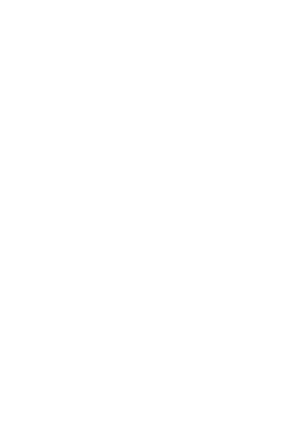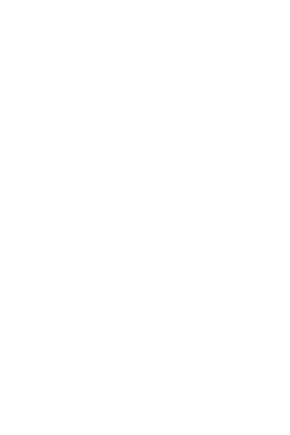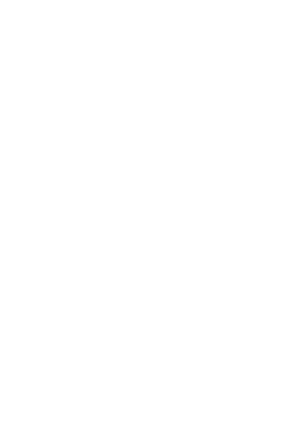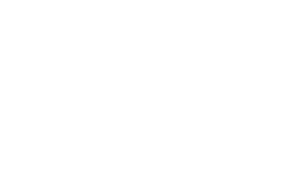 |
 |
 |

|
Persian, 17th century
The heel was not a European invention, instead it originated in Western Asia centuries ago in relation to horseback riding and the invention of the stirrup. This pair of Persian riding shoes features shagreen-covered heels and is the type of footwear that may have inspired European men to wear heels.
Collection of the Bata Shoe Museum, Photo credit: Image © 2015 Bata Shoe
Museum, Toronto, Canada (photo: Ron Wood)
|
|
 |
EXPLORING MEN IN (HIGH) HEELS
Standing Tall: The Curious History of Men in Heels
12/2/2015-1/10/2017
Never before have a few inches mattered so much…
Toronto ON (February 12, 2015) – The Bata Shoe Museum is excited to announce its newest upcoming exhibition, Standing Tall: The Curious History of Men in Heels, opening to the public on May 8, 2015.
|

|
Posted 16 May 2015
|
Share this:
|
|
As the official exhibition to launch the Museum’s 20th anniversary year, Standing Tall will challenge preconceived notions about who wears heels and why. From privileged rulers to hyper-sexualized rock stars this provocative exhibition will explore the history of men in heels from the early 1600s to today, delving into the use and meanings of heeled footwear in men’s dress over the last four hundred years.
|
|
|
|

|

|

|

Dutch, 16th century
This tall boot dates to the 16th century and reflects the style of footwear used by men just prior to the adoption of the heel in Western dress. The sole of the boot features layers of leather creating a low platform that would have augmented height but there is no evidence of a distinct heel. One of the intriguing questions about early heels in European dress is, how did shoemakers go about constructing heels for their eager customers when the heel suddenly came into fashion?
Collection of the Bata Shoe Museum
Photo credit: Image © 2015 Bata Shoe Museum, Toronto,
Canada (photo: Ron Wood)
|
|
While today, the thought of a man in heels is met with disbelief and amazement, invoking images of indiscretion and being different, it hasn’t always been this way. “When heels were introduced into fashion at the turn of the 17th century, men were the first to adopt them and they continued wearing heels as expressions of power and prestige for over 130 years,” said Elizabeth Semmelhack, Senior Curator, Bata Shoe Museum.
“Even after they fell from men’s fashion in the 1730s, there were pockets of time when heels were reintegrated into the male wardrobe not as a way of challenging masculinity but rather as a means of proclaiming it”.
|
|
|

|

|

|

|

|
|
|
English, turn of the 18th century
As the 17th century wore on, the type of heels worn by men expressed two distinctly different forms of masculinity. Leather covered heels suggested refinement, while stacked leather connoted action and were commonly found on men’s riding boots. This ‘thigh’ boot features a high stacked leather heel and was clearly designed to be worn in harsh riding conditions such as battle. The use of hard thick, ‘jack’ leather provided a great deal of protection while the stacked leather heel would have kept the rider’s foot in the stirrup.
Collection of the Bata Shoe Museum
Photo credit: Image © 2015 Bata Shoe Museum,
Toronto, Canada (photo: Ron Wood)
|
|
|
|
|
Men’s mules, English, c. 1690-1715
Men and women wore distinctly different heels by the end of the 17th century. Whether stacked or leather covered, men’s heels were typically broad and sturdy.
Women’s heels, in contrast, were most often leathercovered and very narrow. This pair of men’s mules features high flared heels in keeping with turn of the
18th century men’s fashion and would have been worn at home as part of a gentleman’s undress.
Collection of the Bata Shoe Museum.
Photo credit: Image © 2015 Bata Shoe Museum,
Toronto, Canada (photo: Ron Wood)
|
|
|
|
|
Italian, first half of the 18th century
In addition to being associated with effeminacy, in the early years of the 18th century, the high heel was criticized as being an affront to God. Heels artificially increased height and therefore went against divine design. This pair of red silk shoes featuring appropriately low red heels is said to be papal.
Collection of the Bata Shoe Museum
Photo credit: Image © 2015 Bata Shoe Museum,
Toronto, Canada (photo: Ron Wood)
|
|
|
|

|

|

|

|

|
|
|
English, 1760-1780
Despite the loss of the high heel in men’s fashion in the 18th century, low heeled shoes of brocaded silk ornamented with glittering buckles or secured with large bows continued to be acceptable for court dress. The occasional man’s heel even continued to be highlighted by a flash of colour such as this shoe which features a pink leather-covered heel.
Collection of the Bata Shoe Museum
Photo credit: Image © 2015 Bata Shoe Museum,
Toronto, Canada (photo: Ron Wood)
|
|
|
|
|
Possibly Hungarian, early 19th century
Early 19th century pantaloons were designed to create a long lean line. This was achieved by a strap at the hem that could be wrapped under the foot if the pantaloons were to be worn inside a boot, or if worn full length then slipped under the sole of heeled footwear. The style was highly recommended to men of short stature as it allowed them to wear height augmenting heels without criticism. This Hessian boot with its little heel and extravagant embellishment would have been perfect for pantaloons.
Collection of the Bata Shoe Museum
Photo credit: Image © 2015 Bata Shoe Museum, Toronto,
Canada (photo: Ron Wood)
|
|
|
|
|
German, mid-19th century
Nineteenth century men’s boots were divided between sleek and sturdy, privileged and practical. Men of means wore refined and polished boots linked to the long tradition of equestrianism while the boots worn by labourers were rough and utilitarian; designed for durability. This pair of German boots are very similar to those worn on the Canadian and American frontiers. Indeed many new immigrants headed West after arriving in North America bringing with them their wellmade and hardworking boots.
Collection of the Bata Shoe Museum
Photo credit: Image © 2015 Bata Shoe Museum, Toronto,
Canada (photo: Ron Wood)
|
|
|

|

|

|

Italian, Ferradini, 1972-1975. Worn by Elton John
1970s musicians like Elton John strutted on stage in outrageous outfits and glittering high heels. This stage-worn shoe features a heel reaching seven and a half inches in height. This was made possible by the addition of a five inch thick platform under the forepart of the foot. In the 1970s, men favoured footwear with distinct heels rather than shoes with solid platforms which in the history of Western fashion have always been feminine.
Collection of the Bata Shoe Museum.
Photo credit: Image © 2015 Bata Shoe Museum, Toronto,
Canada (photo: Ron Wood)
|
|
Offering rare examples of men’s heeled footwear from the seventeenth and eighteenth centuries, mid-nineteenth century military boots, 1930s cowboy boots and 1940s biker boots, visitors will also have the opportunity to view John Lennon’s original 1960s Beatle boot, platforms worn by Elton John in the 1970s, and recent heels from haute couture collections, all from the Museum’s own holdings.
|
|
|

|

|

|

|

|
|
|
English, early 1960s. Worn by John Lennon.
When the Beatles became popular in the early 1960s, they stood at the forefront of the Peacock Revolution, a movement in men’s fashion to reclaim the privilege of extravagant dress. Their signature look included “mop-top” hair, tight fitting suits, and the now famous “Beatle boot.” These boots were typical Chelsea boots popular in men’s fashion since the 19th century with the exception that they featured a significantly higher heels borrowed from male flamenco dancers. This boot was worn by John Lennon.
Collection of the Bata Shoe Museum
Photo credit: Image © 2015 Bata Shoe Museum, Toronto, (photo: Ron Wood)
|
|
|
|
|
American, mid-20th century
The heeled biker boot, or engineer’s boot, became popular with bikers after World War II. Groups of young veterans began to gather together drawn by their mutual love of motorcycles and by the late 1940s biker clubs were being established throughout
North America. The biker offered an updated version of the cowboy and his sartorial codes, likewise, spoke to unfettered freedom.
Collection of the Bata Shoe Museum
Photo credit: Image © 2015 Bata Shoe Museum, Toronto,
Canada (photo: Ron Wood)
|
|
|
|
|
French, turn of the 20th century
At the turn of the 20th century, slightly higher heels came back into fashion for men. At two inches, ‘military heels’ were considered high but their blocky shape and stacked leather construction identified them as masculine. Despite the use of the term ‘military heel,’ however, attempts to reinstate an elevating heel into men’s fashion failed.
Collection of the Bata Shoe Museum
Photo credit: Image © 2015 Bata Shoe
Museum, Toronto, Canada (photo: Ron Wood)
|
|
|
|

|

|

|
The opening of Standing Tall will be one of the highlights of the BSM’s 20th anniversary celebrations, once again showcasing the Museum’s role as a world-renowned cultural institution dedicated to exploring the role of footwear in society. Standing
Tall will be one of numerous “unexpected” undertakings over the year long programme. Playing on this theme of “unexpected”, the Museum will be offering exciting events and activities through to May 2016, including a stylish gala birthday evening, a fun community weekend festival, commissioned art installations, performances, lectures, workshops and more. A complete list of planned activities will be available on www.batashoemuseum.ca.
Fascinating and thought-provoking, Standing Tall: The Curious History of Men in Heels will be on display until May 2016.
|
|

Canadian, designed and made by Master John, 1973
The Toronto shoemaker Master John made these men’s platform boots complete with five and a half inch heels, appliquéd stars, and veritable landscape in leather. In the 1970s, some men followed the lead of rock stars in adopting lavish personal adornment and elevating shoes cultivating a persona at once dandyish and hypermasculine.
Collection of the Bata Shoe Museum.
Photo credit: Image © 2015 Bata Shoe Museum, Toronto, Canada
|
|
|
|

|

|

|

American, early 1970s
In the early 1970s, men’s fashion saw a return to traditional garments such as the three piece suit, albeit with slightly exaggerated features such as wider lapels and tight, form-fitting flared pants. Men were encouraged to use accessories, such as high heeled shoes, to express their individuality. The most popular form of footwear remained traditional lace-ups but like the three piece suit was updated by the addition of high heels, platform soles and a wide variety of non-traditional colours and patterns.
Collection of the Bata Shoe Museum
Photo credit: Image © 2015 Bata Shoe Museum, Toronto, Canada
(photo: Ron Wood)
|
|
About the Bata Shoe Museum
The BSM is turning 20! Celebrating a milestone anniversary, the BSM continues to prove that ‘for every shoe there is a story’. With an International collection of over 13,000 shoes and related artefacts, the Bata Shoe Museum celebrates 4,500 years of footwear history in four distinctive rotating galleries. In addition to our popular semi-permanent exhibition, 'All About Shoes', the Museum has three galleries for changing exhibitions, ensuring that each visit to the museum offers a new experience. Through the creation of its innovative exhibitions, the Museum strives to enlighten and entertain visitors of all ages. Exciting adult and children's programming activities and a unique gift shop complete the experience. A cultural gem in the heart of the city, the Bata Shoe Museum is definitely for the curious!
See the Agenda>
Bata Shoe Museum
327 Bloor Street West
Toronto | Ontario | M5S 1W7
+1 (416) 979-7799
www.batashoemuseum.ca
|
|
|
|
|
|
|
|
|
|


